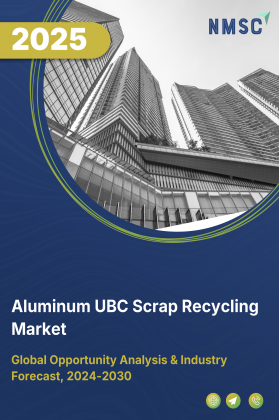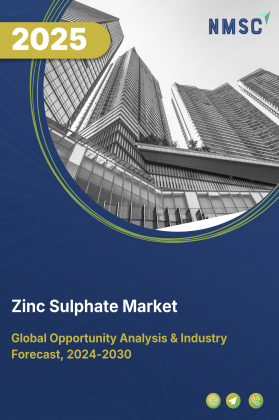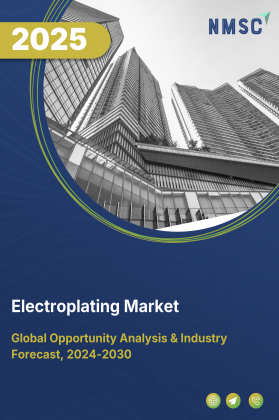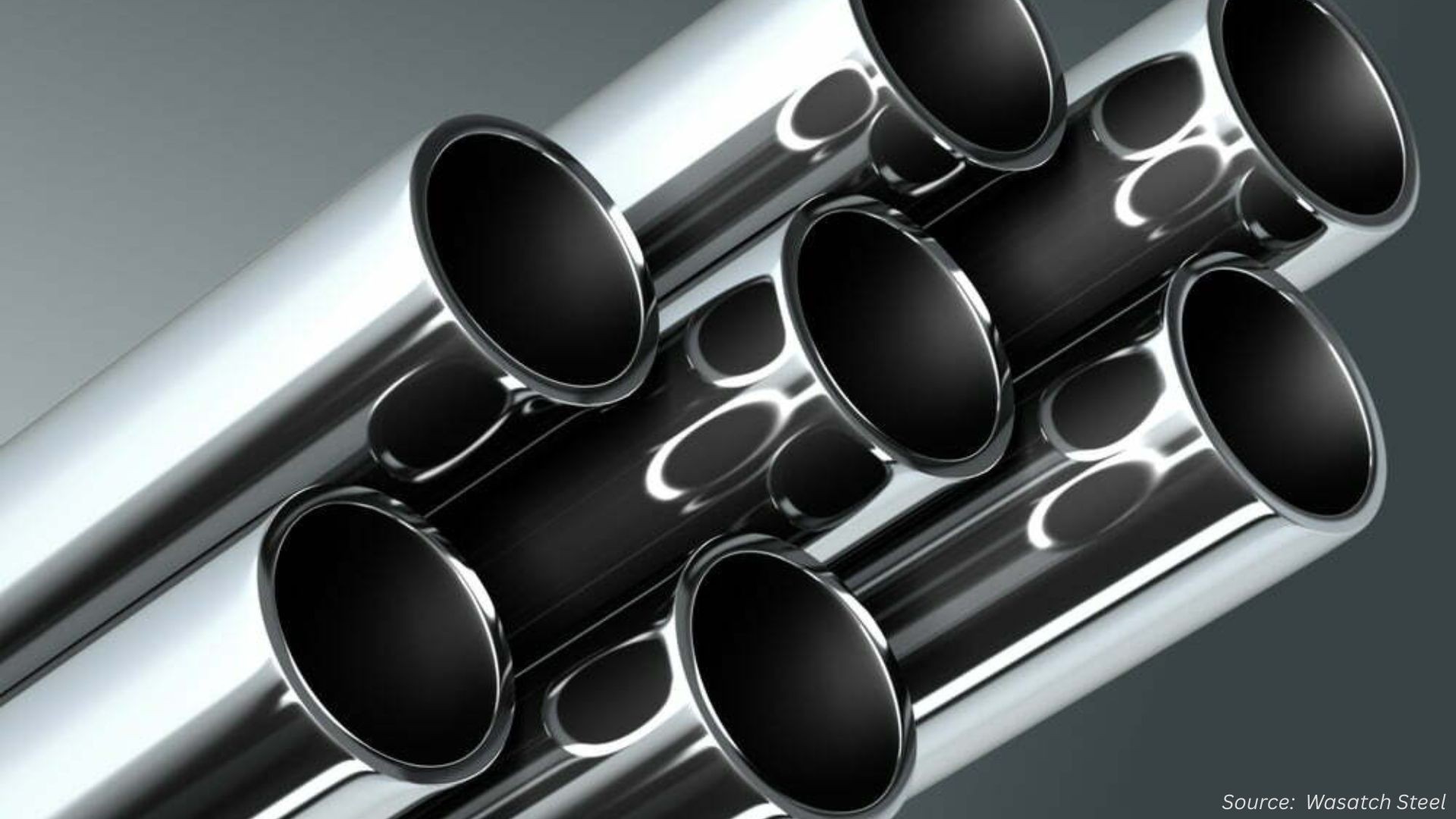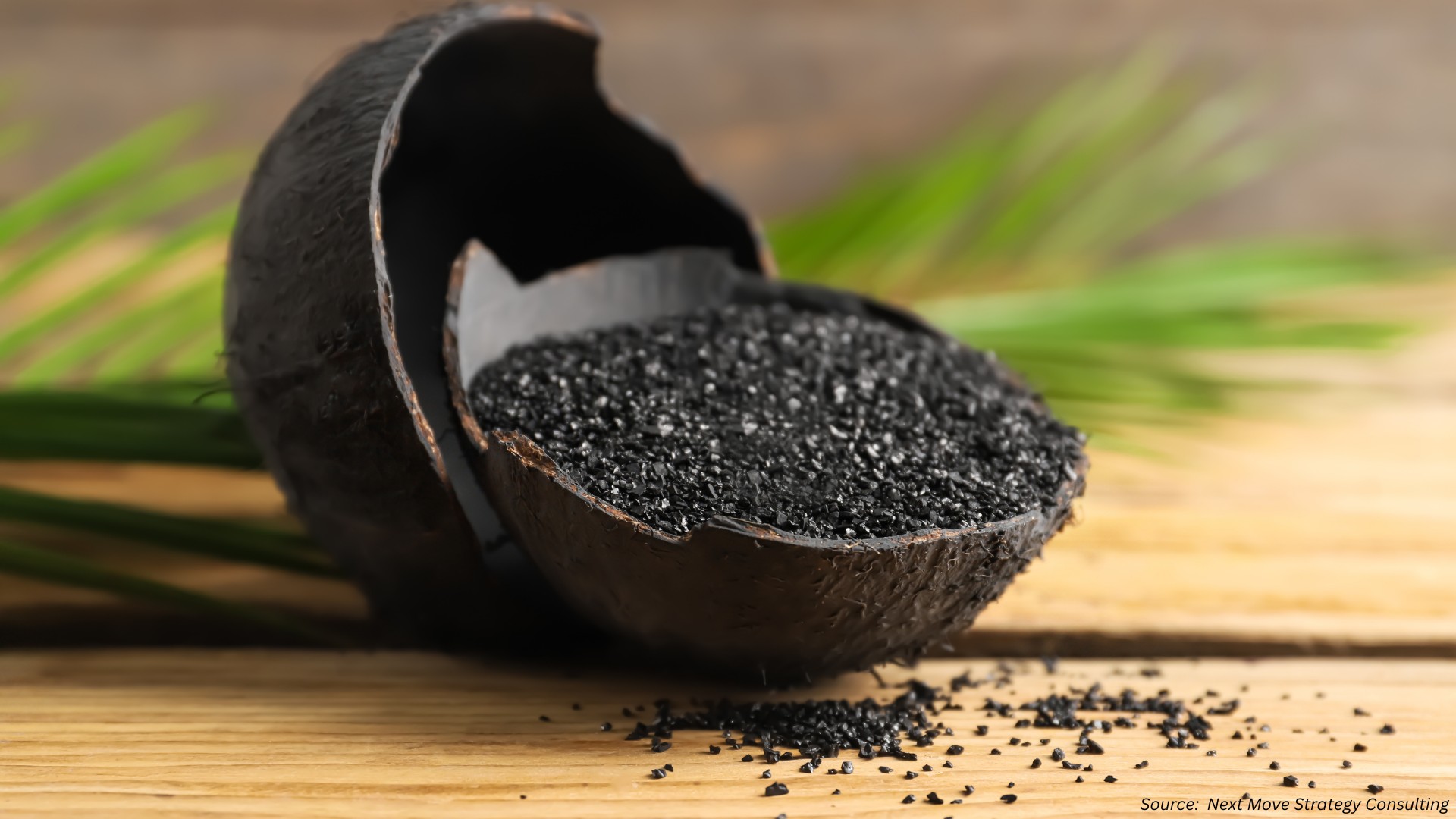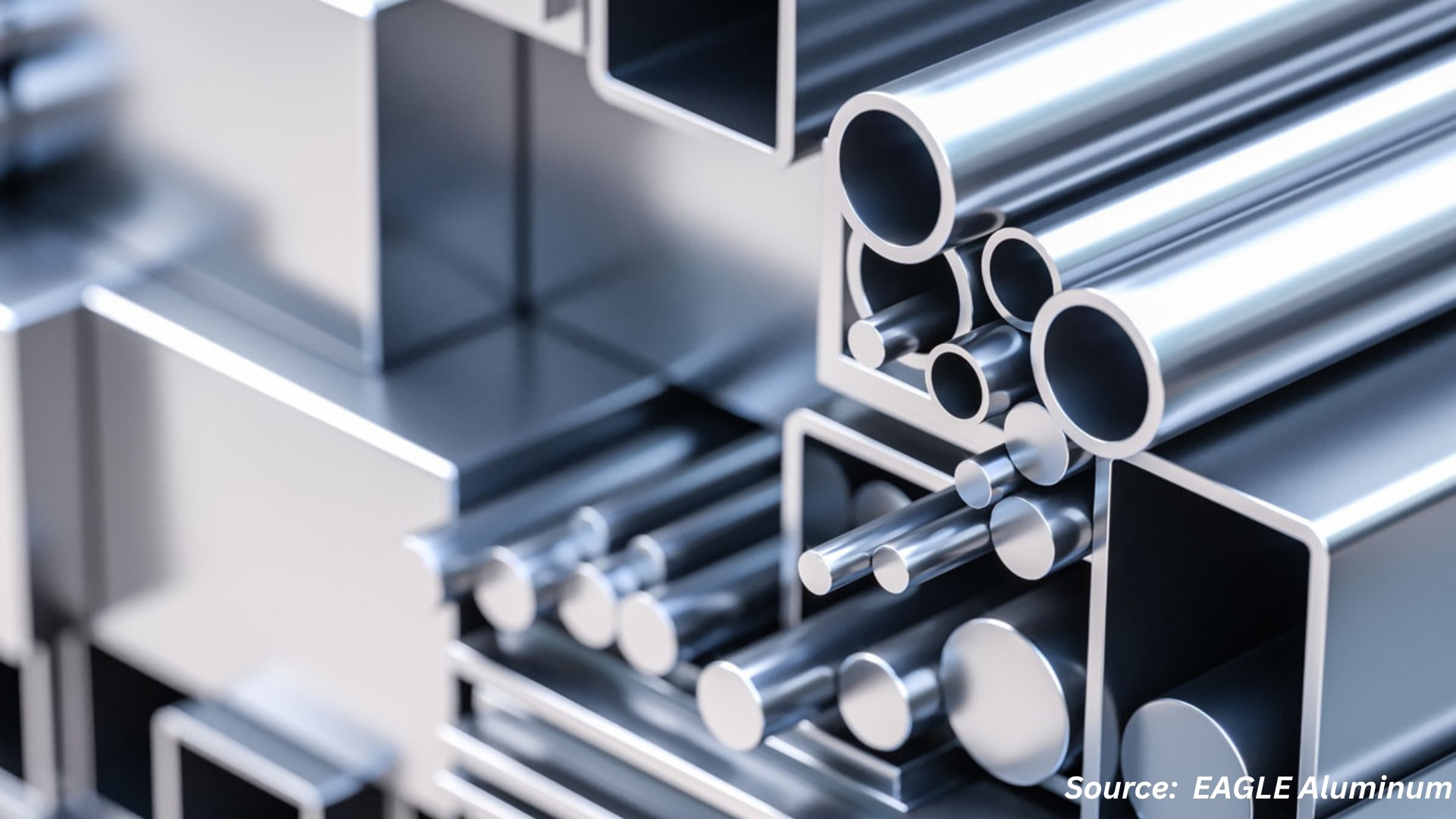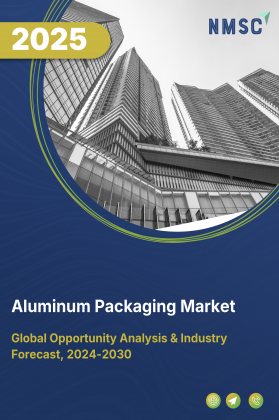
Aluminum Packaging Market by Product Type (Foil Wraps, Pouches & Sachets, Cans & Bottles and Others), by Packaging Structure (Flexible Packaging, Rigid Packaging), by Thickness Range (Up to 0.09 mm, 0.09 mm – 0.2 mm, Above 0.2 mm), by Distribution Channel (Direct Supply, Distributors & Wholesalers and Others), and by End User (Food & Beverage, Pharmaceuticals & Healthcare, Cosmetics & Personal Care, and Others) – Global Opportunity Analysis and Industry Forecast, 2025–2030.
Industry Outlook
The global Aluminum Packaging Market size was valued at USD 49.42 billion in 2024, with an estimation of USD 52.09 billion in 2025 and is predicted to reach USD 67.75 billion by 2030 with a CAGR of 5.4% from 2025-2030. The industry is witnessing robust growth, driven by rising demand for sustainable, recyclable, and convenient solutions.
Aluminum’s ability to be recycled indefinitely without quality loss positions it as a core material in the circular economy, helping companies comply with stricter environmental regulations while reducing waste and energy consumption. At the same time, evolving consumer lifestyles are fuelling demand for lightweight, portable, and durable packaging formats such as foil wraps, pouches, trays, and cans that offer superior barrier protection to preserve freshness and extend shelf life.
The food and beverage sector remains the largest end user, with growing adoption in dairy, ready-to-eat meals, beverages, and processed foods, while pharmaceuticals, cosmetics, and household products also contribute to market expansion. Together, these factors underline aluminum’s importance as a sustainable and versatile packaging solution in a rapidly evolving global market.
Sustainable and Recyclable Packaging Solutions Drives the Market Growth
The growing demand for sustainable and recyclable packaging solutions is a major factor driving the growth of the aluminum packaging market. Aluminum is highly valued for its eco-friendly properties, as it can be recycled indefinitely without losing quality. This makes it a preferred choice for businesses and consumers who prioritize environmental sustainability.
The ability to recycle aluminum reduces waste, conserves natural resources, and lowers energy consumption compared to producing new aluminum from raw materials. With increasing global awareness about environmental issues and stricter government regulations on packaging waste, companies are increasingly adopting aluminum packaging.
Convenient And Portable Packaging Solutions Fuels the Market Expansion
The rising demand for easy-to-use and portable packaging solutions is fuelling the growth of the market. Aluminum packaging, such as foil containers and pouches, offers excellent barrier properties that help maintain freshness, prevent contamination, and extend the shelf life of food and beverages. Its lightweight and sturdy nature make it ideal for ready-to-eat meals, snacks, and takeaway products, catering to busy lifestyles and on-the-go consumers. The convenience of aluminum packaging in handling, storage, and transportation drives its widespread adoption across the foodservice and retail sectors.
Growth in Food & Beverage Sector Boosts the Market Demand
The expanding food and beverage industry is a key driver of the aluminum packaging market demand. Increasing demand for packaged dairy products, ready-to-eat meals, beverages, and processed foods has led companies to adopt aluminum packaging for its protective and preservative properties.
Aluminum effectively shields products from light, moisture, and air, helping extend shelf life and maintain quality. As food and beverage consumption rises globally, particularly in urban areas, the need for reliable, safe, and convenient packaging solutions continues to drive the adoption of aluminum materials across the sector.
High Production and Raw Material Costs Hinders the Market Growth
Rising costs of aluminum production and raw materials pose a significant restraint on the growth of the market. The extraction and processing of aluminum are energy-intensive, leading to higher manufacturing expenses compared to alternative packaging materials like plastics or paper. Fluctuations in global aluminum prices further increase operational costs for manufacturers, making end products more expensive for consumers. As a result, price sensitivity in certain markets limit adoption, particularly in cost-driven sectors, and slow the overall growth of the aluminum packaging industry.
Rising Demand for Sustainable Packaging Solutions Creates New Growth Opportunities
The increasing global focus on sustainability presents a significant growth opportunity for the aluminum packaging market growth. As consumers and governments push for eco-friendly alternatives to single-use plastics, aluminum’s recyclable nature positions it as a preferred material for sustainable packaging.
Companies leverage this trend by developing innovative aluminum packaging designs that meet environmental standards while maintaining product quality. This shift toward greener packaging not only opens new market segments but also enhances brand reputation and aligns with regulatory compliance, creating long-term growth potential for the aluminum packaging industry.
Market Segmentation and Scope of Study
The aluminum packaging market report is divided on the basis of product type, packaging structure, thickness range, distribution channel, end user, and region. On the basis of product type, the market is grouped into foil wraps, pouches and sachets which include retort pouches, stand up pouches and sachets, blister packs, cans and bottles, as well as trays and cartons and lids, caps and closures. On the basis of packaging structure, the market is categorized into flexible packaging and rigid packaging. On the basis of thickness range, the market is divided into up to 0.09 mm, 0.09 mm to 0.2 mm and above 0.2 mm. On the basis of distribution channel, the market is grouped into direct supply, distributors and wholesalers, retail and others. On the basis of end user, the market is segmented into food and beverage, pharmaceuticals and healthcare, cosmetics and personal care, tobacco and confectionery, industrial and chemicals, household products and others. Regional breakdown and analysis of each of the aforesaid segments includes regions comprising of Asia-Pacific, North America, Europe, and RoW.
Geographical Analysis
The growing consumer preference for environmentally friendly packaging is a major driver of the aluminum packaging market share in North America. With increasing awareness of plastic pollution and strict government regulations promoting recyclability, manufacturers are adopting aluminum as a preferred material due to its 100% recyclable nature. Aluminum packaging helps companies reduce their carbon footprint while maintaining product quality and shelf life. This focus on sustainability, combined with strong demand from the food, beverage, and personal care sectors, is accelerating the adoption of aluminum packaging across the region.
Stringent environmental regulations and sustainability initiatives are a major driver of the aluminum packaging market expansion in Europe. Governments across the region are enforcing policies that encourage the use of recyclable and eco-friendly materials, prompting manufacturers to adopt aluminum packaging over conventional plastics. Aluminum’s 100% recyclability, durability, and ability to preserve product quality make it an ideal choice for companies aiming to comply with regulations while meeting consumer demand for sustainable packaging. This regulatory support, combined with increasing consumer awareness, is accelerating market growth across the food, beverage, and pharmaceutical sectors in Europe.
The expanding food and beverage sector is a major driver of the sector in Asia-Pacific. Rising urbanization, increasing disposable incomes, and changing lifestyles are boosting demand for ready-to-eat meals, snacks, and packaged beverages. According to the India Brand Equity Foundation (IBEF, 2025), the food processing sector in the region is expected to reach USD 700 billion by 2030. Aluminum packaging is increasingly adopted for its ability to preserve freshness, extend shelf life, and provide convenience, making it an ideal choice for manufacturers aiming to meet the growing consumer demand across Asia-Pacific.
The adoption of advanced technologies in aluminum packaging is driving market growth in the Rest of the World (RoW). Innovations such as improved barrier coatings, vacuum-sealing techniques, and integration with smart technologies like RFID and QR codes enhance product protection, traceability, and consumer engagement. These technological advancements help manufacturers ensure longer shelf life, better quality control, and improved convenience for end-users. As companies across RoW increasingly invest in innovative packaging solutions to differentiate their products and meet evolving consumer expectations, the demand for aluminum packaging continues to rise.
Strategic Innovations Adopted by Key Players
Key players in the aluminum packaging industry are accelerating global expansion through upscale brand launches, service diversification, and strategic partnerships.
-
In May 2025, Constantia Flexibles announced a USD 58.41 million investment to expand its rolling mill in Austria, a move that will increase aluminum foil output by nearly 30%. The expansion includes the integration of solar power systems and a new lacquering unit, aimed at cutting CO₂ emissions and advancing the company’s sustainability goals. This investment comes at a crucial time for the global aluminum packaging market, where rising demand for lightweight, recyclable, and eco-friendly materials is reshaping the competitive landscape.
-
In August 2024, Hindalco Industries, part of the Aditya Birla Group, announced plans to invest US USD 10 billion to expand its domestic operations and scale up its U.S. subsidiary Novelis, including the flagship Bay Minette project in Alabama. The capital infusion will enhance aluminum and copper production capacity while also advancing solutions for the electric vehicle sector.
Key Benefits
-
The report provides quantitative analysis and estimations of the industry from 2025 to 2030, that assists in identifying the prevailing aluminum packaging market opportunities.
-
The study comprises a deep-dive analysis of the current and future aluminum packaging market trends to depict prevalent investment pockets in the industry.
-
Information related to key drivers, restraints, and opportunities and their impact on the market is provided in the report.
-
Competitive analysis of the key players, along with their market share is provided in the report.
-
SWOT analysis and Porters Five Forces model is elaborated in the study.
-
Value chain analysis in the market study provides a clear picture of roles of stakeholders
Aluminum Packaging Market Key Segments
By Product Type
-
Foil Wraps
-
Kitchen Wraps
-
Household Rolls
-
-
Pouches & Sachets
-
Retort Pouches
-
Stand Up Pouches
-
Sachets
-
-
Blister Packs
-
Pharma Blisters
-
Consumer Goods blisters
-
-
Cans & Bottles
-
Beverage Cans
-
Aerosol Cans
-
Aluminum Bottles
-
-
Trays & Cartons
-
Lids, Caps & Closures
By Packaging Structure
-
Flexible Packaging
-
Rigid Packaging
By Thickness Range
-
Up to 0.09 mm
-
0.09 mm – 0.2 mm
-
Above 0.2 mm
By Distribution Channel
-
Direct Supply
-
Distributors & Wholesalers
-
Retail
-
Others
By End User
-
Food & Beverage
-
Pharmaceuticals & Healthcare
-
Cosmetics & Personal Care
-
Tobacco & Confectionery
-
Industrial & Chemicals
-
Household Products
-
Others
By Region
-
North America
-
The U.S
-
Canada
-
Mexico
-
-
Europe
-
The UK
-
Germany
-
France
-
Italy
-
Spain
-
Denmark
-
Netherlands
-
Finland
-
Sweden
-
Norway
-
Russia
-
Rest of Europe
-
-
Asia-Pacific
-
China
-
Japan
-
India
-
South Korea
-
Australia
-
Indonesia
-
Singapore
-
Taiwan
-
Thailand
-
Rest of Asia-Pacific
-
-
Rest of the World
-
Latin America
-
Middle East
-
Africa
-
Key Players
-
Constantia Flexibles Group GmbH
-
Hindalco Industries Ltd.
-
CCL Container.
-
United Company RUSAL
-
Eurofoil
-
Symetal SA
-
Aikou Packaging Co. Ltd.
-
Alibérico SLU
-
Hulamin Ltd.
-
Ball Corporation
-
UACJ Corporation
-
Prestige Packages.
-
SMC
Report Scope And Segmentation
|
Parameters |
Details |
|
Market Size in 2025 |
USD 52.09 Billion |
|
Revenue Forecast in 2030 |
USD 67.75 Billion |
|
Growth Rate |
CAGR of 5.4% from 2025 to 2030 |
|
Analysis Period |
2024–2030 |
|
Base Year Considered |
2024 |
|
Forecast Period |
2025–2030 |
|
Market Size Estimation |
Billion (USD) |
|
Growth Factors |
|
|
Countries Covered |
28 |
|
Companies Profiled |
15 |
|
Market Share |
Available for 10 companies |
|
Customization Scope |
Free customization (equivalent to up to 80 working hours of analysts) after purchase. Addition or alteration to country, regional, and segment scope. |
|
Pricing and Purchase Options |
Avail customized purchase options to meet your exact research needs. |
















 Speak to Our Analyst
Speak to Our Analyst



